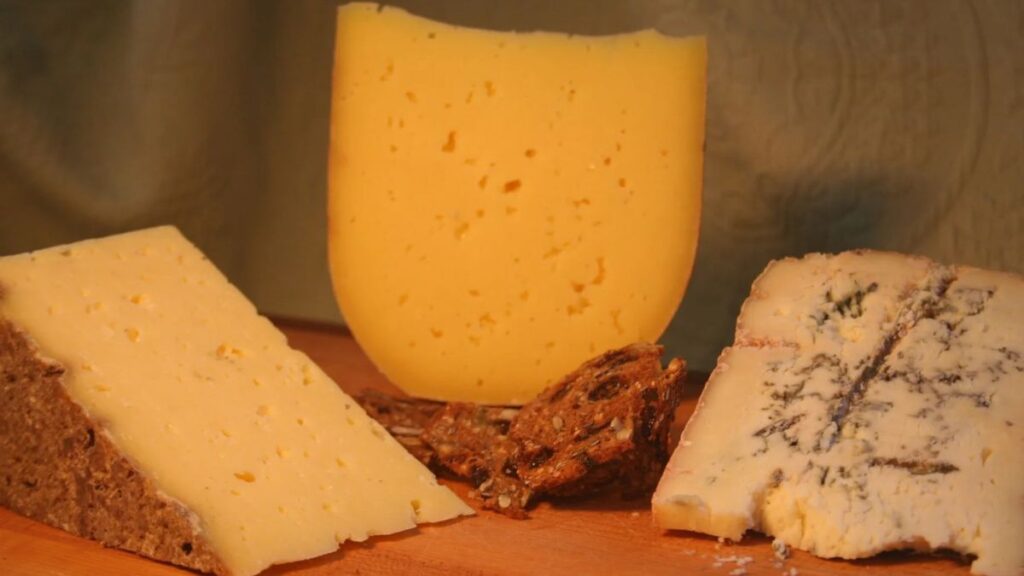Grouse cheese has been making waves in gourmet circles, captivating food lovers with its rich flavors and artisanal charm. But have you ever paused to consider the journey it takes from pasture to plate? This delightful cheese is not just a culinary treat; it’s a product of tradition, hard work, and passion for sustainable farming practices. From the lush green fields where grouse cows graze to the hands that craft each wheel of cheese, every step tells a story worth savoring. Join us as we dive into this delicious adventure and explore what makes grouse cheese truly special—inside your kitchen and beyond.
The History of Grouse Cheese
The roots of grouse cheese stretch back to ancient traditions in rural communities. Historically, farmers sought ways to preserve milk from their herds, leading to the creation of various cheeses. Grouse cheese emerged as a local favorite due to its unique flavor profile and creamy texture.
As regions began to specialize in artisanal practices, this cheese gained recognition for its distinctive taste. Farmers honed their techniques, often passing recipes through generations. Each batch was crafted with care, reflecting the landscape and climate where it originated.
In more recent years, a revival of interest in small-scale production has brought grouse cheese into modern kitchens. Chefs and food enthusiasts alike treasure its versatility and depth of flavor, celebrating a product that embodies both tradition and innovation. The story continues today as producers explore new varieties while honoring the rich heritage behind every wheel of this remarkable cheese.
Farming and Raising Grouse Cows
Raising grouse cows involves a delicate balance of care and environment. These animals thrive in settings that mimic their natural habitat. Grazing on grassy pastures, they enjoy a diet rich in nutrients, essential for high-quality milk production.
Farmers prioritize the welfare of their herd. They monitor health closely, ensuring each cow receives proper nutrition and veterinary attention when needed. This hands-on approach fosters strong relationships between farmers and cows, creating an atmosphere conducive to optimal growth.
Breeding practices also play a crucial role in developing resilient grouse cows. Farmers select for traits that enhance both milk quality and temperament. The result is a herd that not only produces exceptional milk but is also manageable and friendly.
Sustainable farming methods are increasingly popular among those who raise these unique animals. Rotational grazing helps maintain soil health while reducing environmental impact, ensuring future generations can continue enjoying delicious grouse cheese made from this remarkable milk source.
The Process of Making Grouse Cheese
The journey of grouse cheese begins with high-quality milk sourced from specially raised grouse cows. These animals thrive in lush pastures, contributing to the rich flavor profile of the cheese.
Once the milk is collected, it undergoes pasteurization to ensure safety and enhance taste. Next, skilled artisans add cultures and rennet, initiating the curdling process. This transformation is crucial for developing texture and flavor.
After curds form, they are cut into small pieces. The size affects moisture levels and influences how the final product will taste. Then comes heating; this step helps release whey while encouraging firm texture.
Draining excess whey follows, allowing only desirable moisture to remain. The curds are then pressed into molds before aging begins—a critical phase where flavors deepen over weeks or months.
Throughout this intricate process, attention to detail ensures that each wheel captures the essence of its origins: a true farm-to-table delight.
Different Varieties and Flavors of Grouse Cheese
Grouse cheese comes in a delightful array of varieties and flavors. Each type offers its own unique taste profile, catering to diverse palates.
One popular variety is the classic aged grouse cheese. It boasts a rich, nutty flavor that deepens over time. The texture becomes crumbly yet creamy, making it perfect for charcuterie boards.
For those seeking something bolder, smoked grouse cheese adds an intriguing twist. Its smoky aroma and savory notes elevate any dish or snack.
Herbed variations also shine bright on the shelf. Infused with fresh herbs like rosemary or thyme, these cheeses bring vibrant flavors to salads and pasta dishes.
There are seasonal offerings infused with fruits such as figs or cranberries. This sweet contrast pairs beautifully with wines and is a favorite during festive gatherings.
With so many options available, exploring the world of grouse cheese is always an adventure worth taking!
Sustainability and Ethical Practices in Grouse Cheese Production
Sustainability is at the heart of grouse cheese production. Farmers focus on nurturing their land while ensuring a minimal environmental footprint. This commitment to eco-friendly practices helps maintain biodiversity and soil health.
Ethical treatment of animals is equally important. Grouse cows roam freely, enjoying pasture-based diets that enhance both their well-being and the quality of milk produced. Happy cows produce better milk, leading to richer cheese.
Many producers also engage in waste reduction strategies. By reusing byproducts from cheesemaking for animal feed or composting, they create a closed-loop system that diminishes waste significantly.
Local sourcing further strengthens sustainability efforts. Supporting nearby farms not only boosts local economies but also shortens transport distances, reducing carbon emissions associated with distribution.
The integration of these ethical practices ensures that every bite of grouse cheese contributes positively to both the environment and community welfare.
Culinary Uses for Grouse Cheese
Grouse cheese is a culinary gem that adds depth to a variety of dishes. Its creamy texture makes it perfect for melting, enhancing everything from gourmet grilled cheeses to savory pasta bakes.
In salads, crumbled grouse cheese provides a delightful contrast with fresh greens and fruits. Pair it with walnuts and balsamic vinaigrette for an elevated taste experience.
For charcuterie boards, this cheese shines alongside cured meats, olives, and artisan bread. It invites creativity—try pairing it with honey or fig jam for a unique flavor combination.
Baking enthusiasts can incorporate grouse cheese into quiches or frittatas, bringing richness to breakfast plates.
Don’t forget about snacks! Spread it on crackers or mix it into dips for gatherings. Each bite offers a burst of flavor that keeps guests coming back for more.
Where to Find and Buy Grouse Cheese
Finding grouse cheese is an exciting adventure for any cheese lover. Specialty cheese shops often carry this delightful product, so checking out local artisanal markets can yield some treasures.
Farmers’ markets are another great option. Many local producers showcase their unique varieties directly to consumers. This not only supports small businesses but also allows you to ask questions about the production process.
Online retailers have made accessing gourmet foods easier than ever. Websites dedicated to artisan cheeses frequently stock grouse cheese and offer shipping right to your door.
Don’t forget about restaurants that focus on farm-to-table dining experiences. These establishments often feature locally sourced ingredients, including delicious grouse cheese in their menus.
Exploring these various avenues will lead you straight to this creamy delight, enriching your culinary journey along the way.
The Future of Grouse Cheese Production
The future of grouse cheese production is poised for exciting evolution. As consumer demand for artisanal cheeses grows, producers are exploring innovative methods to enhance quality and flavor.
Technological advancements in dairy processing are transforming the landscape. Techniques such as precision fermentation could lead to new varieties, offering unique taste profiles that delight adventurous palates.
Sustainability remains a crucial focus. Farmers are implementing eco-friendly practices that not only benefit the environment but also enrich the milk’s quality. These initiatives foster healthier pastures and happier cows.
Moreover, collaboration among local cheesemakers fosters community spirit and creativity. By sharing knowledge and resources, they can elevate their craft while promoting regional identities.
As awareness around food sources increases, more consumers seek transparency in production processes. This trend will likely shape how grouse cheese is marketed and produced in years to come—creating an even stronger connection between farm and table.
Conclusion
Grouse cheese stands as a testament to the dedication and passion of artisan cheesemakers. From its rich history rooted in tradition to the careful farming practices that raise healthy cows, every aspect contributes to this unique dairy product. The making process transforms high-quality milk into an array of flavorful cheeses, showcasing diverse varieties that cater to different palates.
Sustainability plays a vital role in modern grouse cheese production. Ethical farming and responsible sourcing not only benefit the environment but also enhance the quality of each batch. This commitment resonates with consumers who prioritize eco-friendly choices.
Culinary enthusiasts love incorporating grouse cheese into various dishes, elevating everyday meals with its distinct flavors. Whether enjoyed on a charcuterie board or melted over pasta, it promises satisfaction for any foodie.
As demand grows, so does interest in finding grouse cheese at local markets and specialty stores. It’s becoming easier than ever for people to discover this delightful product.
Looking ahead, the future of grouse cheese production is bright. With innovation driving new techniques and flavor profiles while maintaining respect for traditional methods, there’s much more excitement on the horizon for those who appreciate this exceptional cheese.






